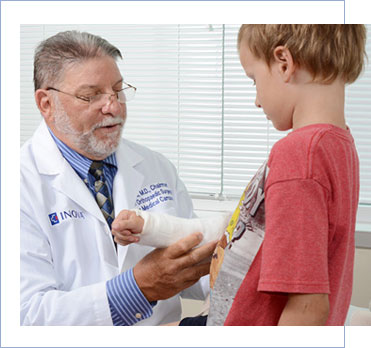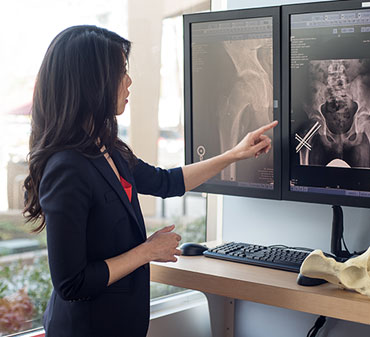Orthopedic Clinic in Dallas-Fort Worth
Foundation Physicians Group specializes in orthopedic diseases of bones and joints, fractures, ligament, cartilage, or tendon Injuries, platelet rich plasma injection (PRP), and arthroscopy for knees, shoulders, hips, ankles, and elbows. Platelet activation plays a crucial role in the process of wound and soft tissue healing. With the use of PRP, a portion of your own blood is centrifuged to isolate platelets. The platelets are then injected to site of injury under ultrasound guidance. The platelet concentration promotes healing of injured tendons, ligaments, muscles, and joints, in various musculoskeletal problems.


Some common bones, joints and muscles injuries we treat:
- Achilles Tendon
- ACL Injuries
- Arthritis
- Back Injuries
- Back Pain
- Bursitis
- Calcium
- Carpal Tunnel Syndrome
- Fibromyalgia
- Multiple Sclerosis
- Neuromuscular Disorders
Arthroscopy is a surgical procedure carried out by orthopedic surgeons use to visualize, diagnose, and treat problems inside a joint. During the arthroscopic examination, our orthopedic surgeon makes a small incision in your skin and then inserts a pencil-sized instrument that contains a small lens and lighting system to magnify and illuminate the structures inside of the joint. Light is transmitted through fiber optics to the end of the arthroscope that is put in into the joint. To properly diagnose joint injuries and disease we will begin with a detailed medical history, physical examination, and necessary X-rays, magnetic resonance imaging (MRI), or computed tomography (CT).

Several procedures may combine arthroscopic with standard surgery, such as:
- Rotator cuff surgery,
- The repair or resection of torn cartilage (meniscus) from knee or shoulder,
- The reconstruction of anterior cruciate ligament (ACL) in knee,
- The removal of inflamed lining (synovium) in knee, shoulder, elbow, wrist, ankle
- The release of carpal tunnel,
- The repair of torn ligaments,
- And the removal of loose bone or cartilage in knee, shoulder, elbow, ankle, or wrist.
Arthroscopic surgery requires the use of anesthetics and the special equipment that we have in our outpatient surgical suites. We will give you a general, spinal, or a local anesthetic, depending on the joint or suspected problem. After arthroscopic surgery, your incisions will be covered with a dressing. After the operation, you will be moved to the recovery room. If required, we will manage your pain with whichever methodology you prefer – IV, oral, or injection. Before the surgeon decides to discharge you, you will be given instructions about care for your incisions, what activities you should avoid, and which exercises you should do to aid your recovery. During the follow-up visit, the surgeon will inspect your incisions, and remove any sutures, then and discuss your rehabilitation program.

Sometimes during or after the recovery process, you may realize that your injury or disease cannot be treated adequately with arthroscopy alone. The extensive, continued, open surgery may be performed while you are still anesthetized, or at a later date after you have discussed the findings with your surgeon.
If you have any questions about the orthopedic procedures offered at Foundation Physicians Group, contact us today to schedule your consultation or appointment.

